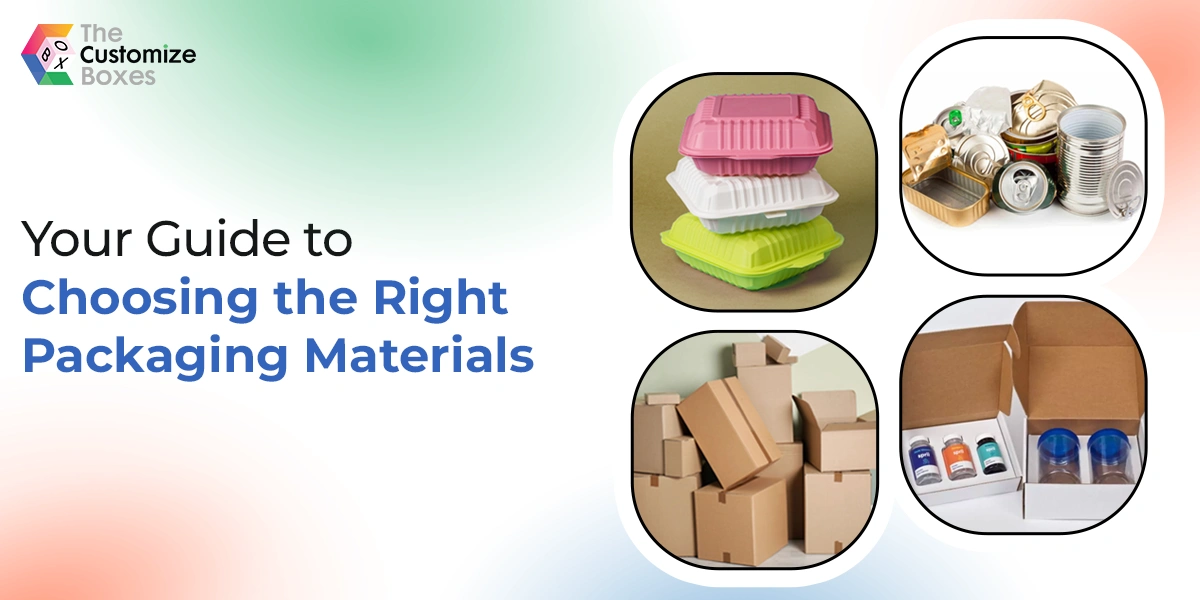
Choosing the right packaging materials for your needs can be a daunting task. There’s a plethora of materials available, and you can easily go down the rabbit hole and still might not find the materials that suit you most.
But reading this blog will help you easily compare and choose the right material for your needs. Read on to find different types, customization options, and prices to make a learned decision – let’s dive in!
2 Primary Types of Packaging Materials
Packaging materials can be categorized in two major types. Knowing about both of them is fundamental for choosing the right packaging for your brand. Here are the two types of packaging materials:
Rigid Packaging:
Rigid packaging is used for providing utmost protection to products. This packaging mostly includes materials like plastics, wood, glass, metals, and rigid material. Here, we have discussed five types of rigid packaging materials in detail:
-
Plastics
Plastic is one of the most commonly used packaging materials and has a lot of varieties. The importance and the demand of plastics can be well analyzed with the plastic packaging market size which is expected to be around USD 612.1 Bn by 2032.
Plastic packaging is a custom packaging solution. It is a widely used and acceptable packaging material. Multiple varieties and types of plastics easily cover packaging requirements of different industries. Here’s a brief overview of the top types of plastic packaging materials:
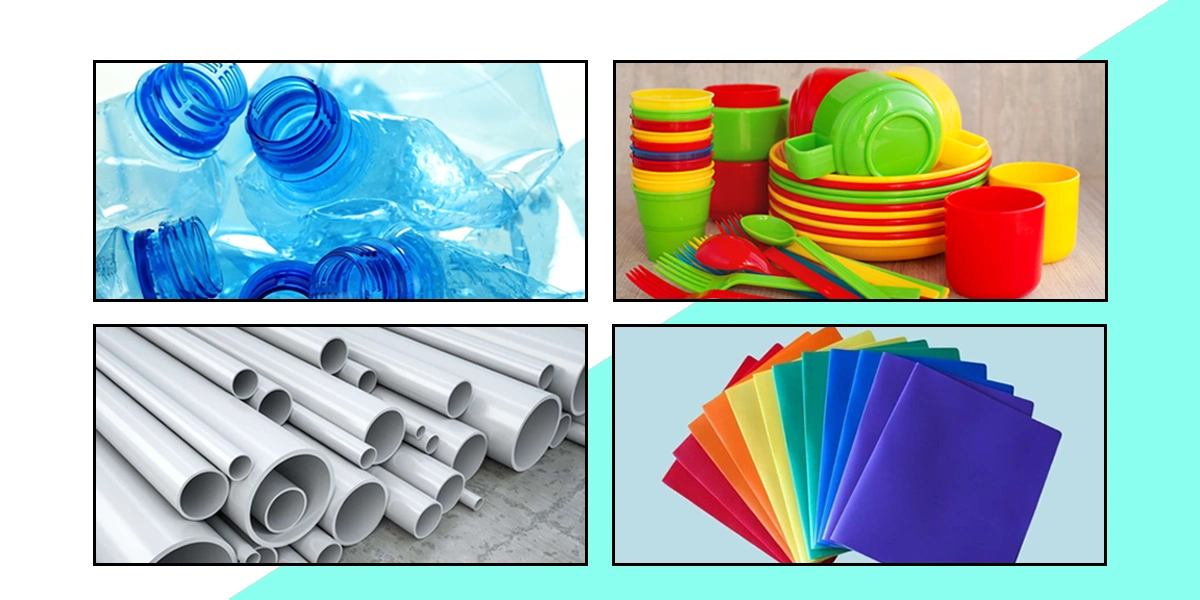
Polyethylene Terephthalate (PET):
This material is colorless and transparent. It is so flexible and is almost unbreakable. This is mostly used for the beverage industry due to its characteristics and features. And this material can also be recycled easily.
High-Density Polyethylene (HDPE):
High-density polyethylene (HFPE), is a thermoplastic polymer sometimes called polythene. Natural HDPE resin is semi-transparent. HDPE has excellent barriers and rigidity properties, which is why it’s used for heavy-duty packaging.
Rigid Polyvinyl Chloride (RPVC):
Rigid Polyvinyl Chloride (RPVC) is a strong, stiff, low-cost plastic material. It can also be fabricated and used widely, especially in the pharmaceutical industry to package tablets and capsules.
Polypropylene (PP):
Polypropylene (PP) is an (ideal food-safe plastic material. It is used for ready-to-eat meals. It is best suited for food items like yogurt and cream.
-
Wood
Wood is a commonly used packaging material. It is nature-friendly and acceptable in many industries. It is recyclable and easy to customize. However, options of wood customization are limited as compared to plastics and paperboard. The following is the usage of wood packaging products:
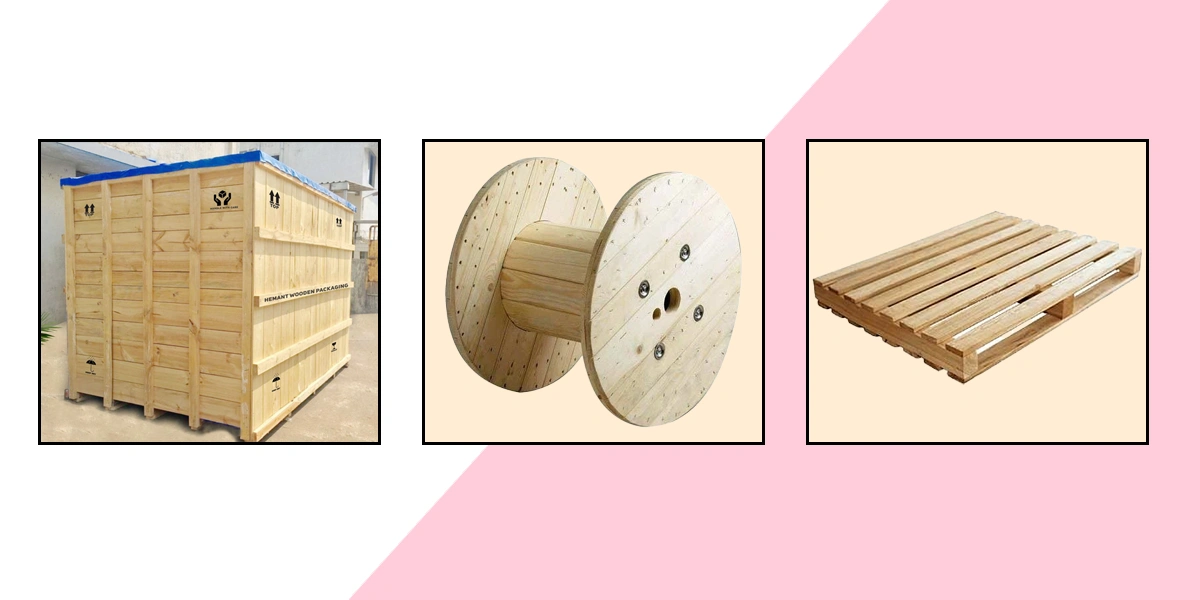
Containers:
Wood packaging is mainly used for containers of different items. These containers may be used in the shapes of crates, boxes, bins, drums, load boards, and cases. These are highly useful and convenient for transportation and storage.
Pallets:
Pallets are a useful packaging material in rigid form, and these help move heavy loads from one place to another easily. This portable packaging solution is widely used in industries.
Reels (used for cable storage):
One of the impressive uses of wooden packaging solutions is in reel form. It is used to roll cables for storage purposes. These are highly in demand in industries that need to store their material in reel form.
-
Paperboard:
Paperboard is one of the most used types of packaging materials in the world. Paperboard, board, or cardboard is a fairly thick and rough packaging material, making it one of the best sustainable packaging materials. It is commonly used for food packaging like dry, frozen, or fast food.
This material is extracted from natural sources and is environmentally friendly. Paperboard has many benefits for the environment, and can help you prove that you’re following environment-friendly practices. Here are the main types of paperboard:
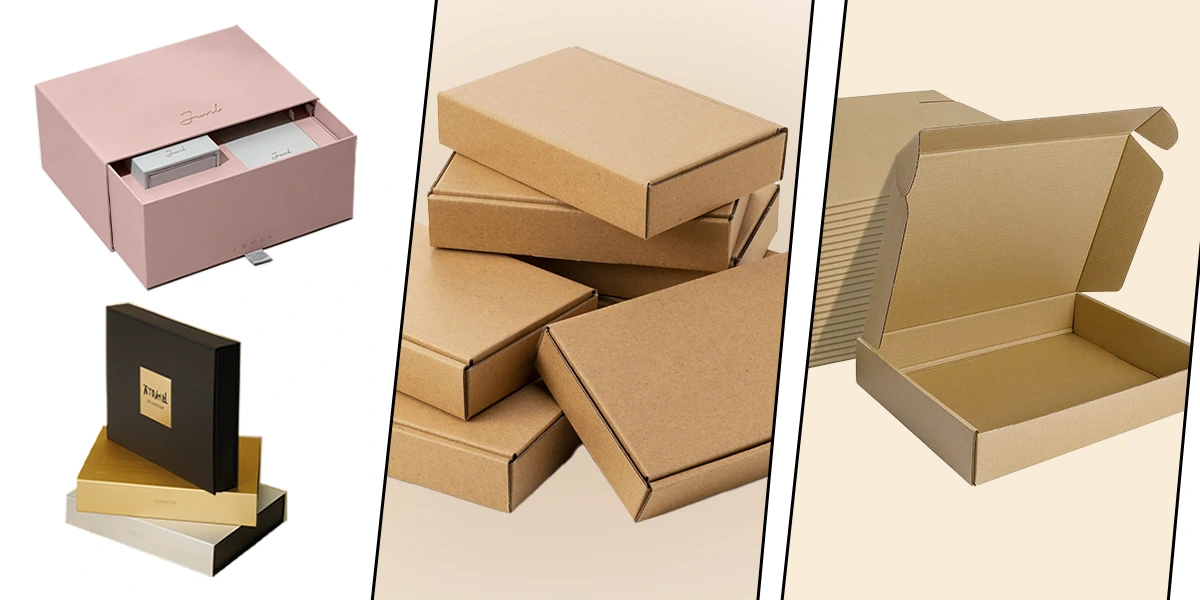
Corrugated:
Corrugated is one of the most commonly used custom packaging materials to transport products. Due to significant features like durability, reliability, and convenience, this material is considered best for shipping. This packaging solution consists of multi-layers of paperboard to make it more useful to carry and protect the products in this corrugated paper-based packaging.
Rigid:
As its name indicates, it is a sturdy paper-based packaging material. Rigid material is made from layers of paperboard and cardboard to make it sturdy and rigid. It is one of the luxurious packaging solutions. It provides a quality surface for the printing options and gives the packaging a premium look.
Cardboard:
Cardboard or paperboard is one of the finest packaging solutions to give the packaging a different, shiny, and appealing look. As cardboard is made of paper-based material, it provides a natural look to the packaging solutions. It is eco-friendly and recyclable as well.
Paper:
Paper used in product packaging provides a natural look, eco-friendly, and recyclable packaging. Kraft paper packaging gives the product a natural look and nature-friendly features. It is also cost-effective packaging and gives your product packaging an environment-friendly feel.
-
Glass
Glass is a unique material for product packaging. This material is highly recyclable. The glass material is lead-free and harmless and can withstand if handled carefully. Some of the types of glass packaging material are discussed here:
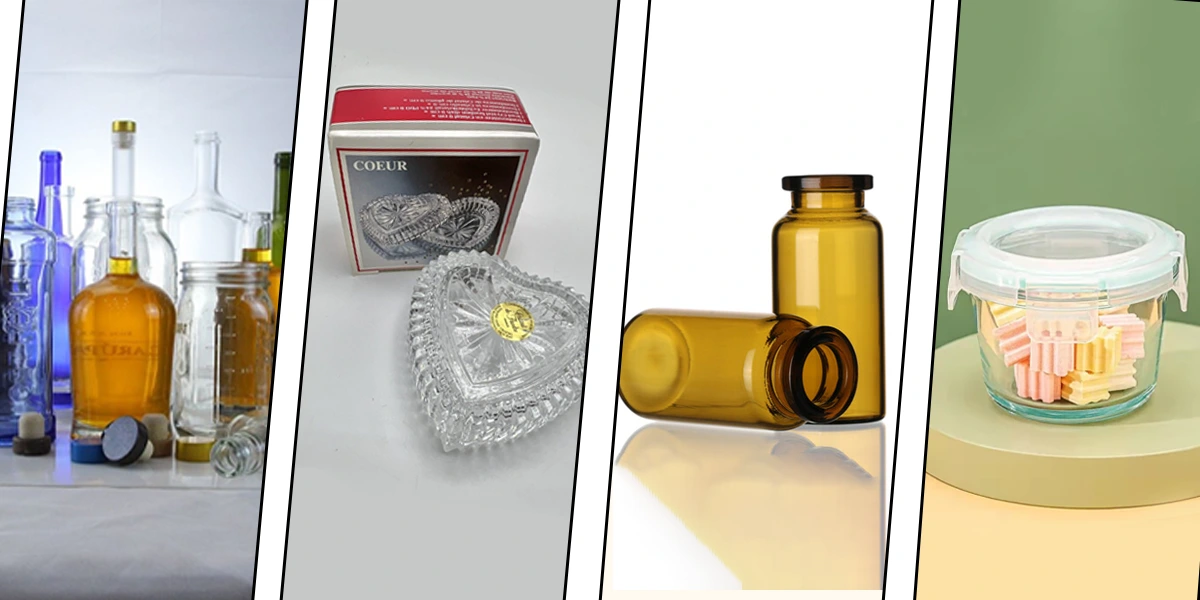
Borosilicate:
Borosilicate is a chemically inert and highly resistant packaging material. It is highly resistant to thermal shock and chemical substances used. This material is recommended to carry all types of injectables and most delicate treatments.
Soda Lime:
Soda lime packaging material is a delicate material. This material is suitable for food, oil, and beverage packaging. Soda lime packaging can be used for drinking glasses. This may also be used for window making.
Treated Soda Lime:
Treated soda lime is inexpensive, chemically stable, and ideal for recycling. This is mostly suitable for the pharmaceutical industry packaging. This material can be used for drinking glasses and bottles. This material can be re-melted and recycled because it has a low melting temperature.
Lead Crystal:
Like other glass packaging materials, it is one of the harmless packaging materials. It has a good barrier performance. Glass packaging material has different uses in many industries. The pharmaceutical industry is one of the top consumers of glass packaging materials.
-
Metal
Metals as a product packaging is different from the other packaging options. It is a highly resistant material. It provides high-quality preservance of the products from the atmospheric harmful factors. Metals are more protective packaging materials. The following are the widely used metals in the packaging industry.
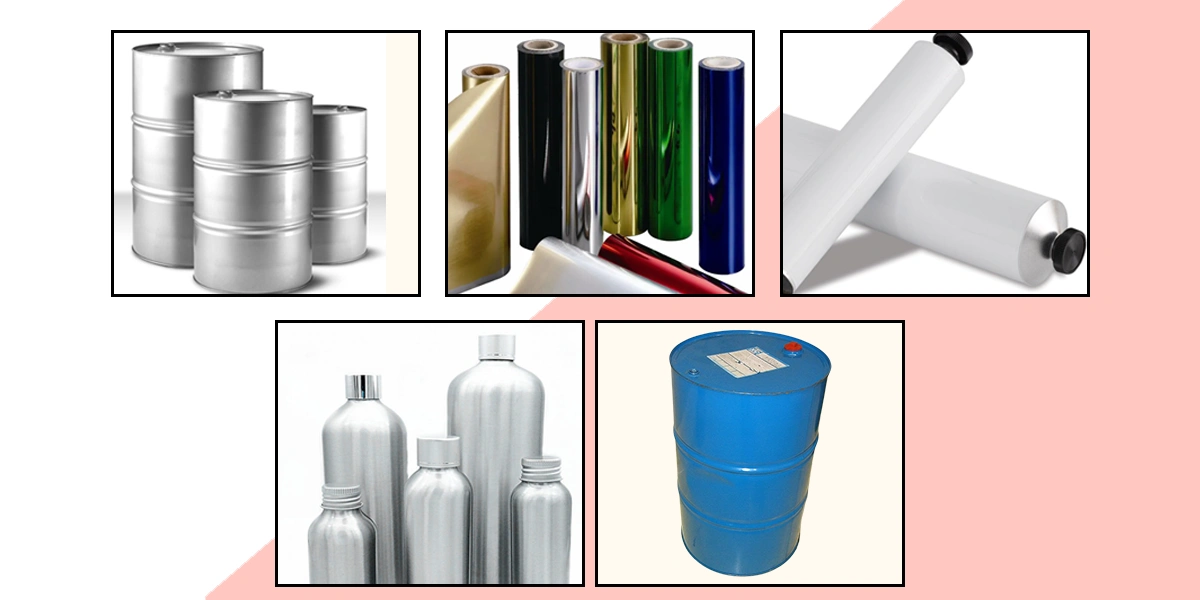
Tin:
One commonly used type of metal packaging is tinplate or tin packaging material. A thin steel-coated layer of tin is used for packaging products. Tin is one of the best preservative materials for the food packaging and beverage industry. It protects the food items for a long time from the harmful elements of the surroundings in the atmosphere.
Steel:
One of the most commonly used metallic materials is steel. It is used with no comparison, it has its own unique and special features that are second to none. Along with other features, it is long-lasting and highly resistant to harmful elements around the atmosphere. It is recyclable, and reusable, reducing the wastage of natural resources.
Cans Aluminum Collapsible Tubes:
Cans aluminum collapsible tubes packaging is of high value for sensitive products, as it contains the barrier properties to light and air. This type of packaging is considered as one of the best rigid packaging solutions.
Aluminum Bottles:
Aluminum Bottles are a strong and beneficial product packaging option. It is lighter in weight, preservant in nature, and efficient in cost. These are highly in use in many industries like the beverage industry.
Laminated and Metalized Films:
Laminated and Metalized Films create durability in product packaging due to their protective layers on the product packaging. It can increase the life of product packaging. This material can also keep the products safer with its protective layers of metallics insulations.
Metal Drums:
Metal Drums, whether made from iron or steel are the most acceptable packaging solution. However, it can extend to the durability, presentation, and sustainability if they are made of steel metal. These drums are used for the storage of liquid items mostly.
Flexible Packaging:
Flexible packaging is a category of widely-used packaging materials. Its demand is everywhere around the world. For this packaging, manufacturers mostly use plastic, paper, and metal. Plastic material enjoys multiple personalization effects and is considered in an innovative packaging materials family. Here is the breakdown of three types of flexible packaging:
-
Plastics
Plastic packaging is among the top items in product packaging worldwide. It has unlimited customization features. Some plastics can also be used as an environment-friendly biodegradable packaging material. Here are the product packaging materials that belong to the plastic material family:
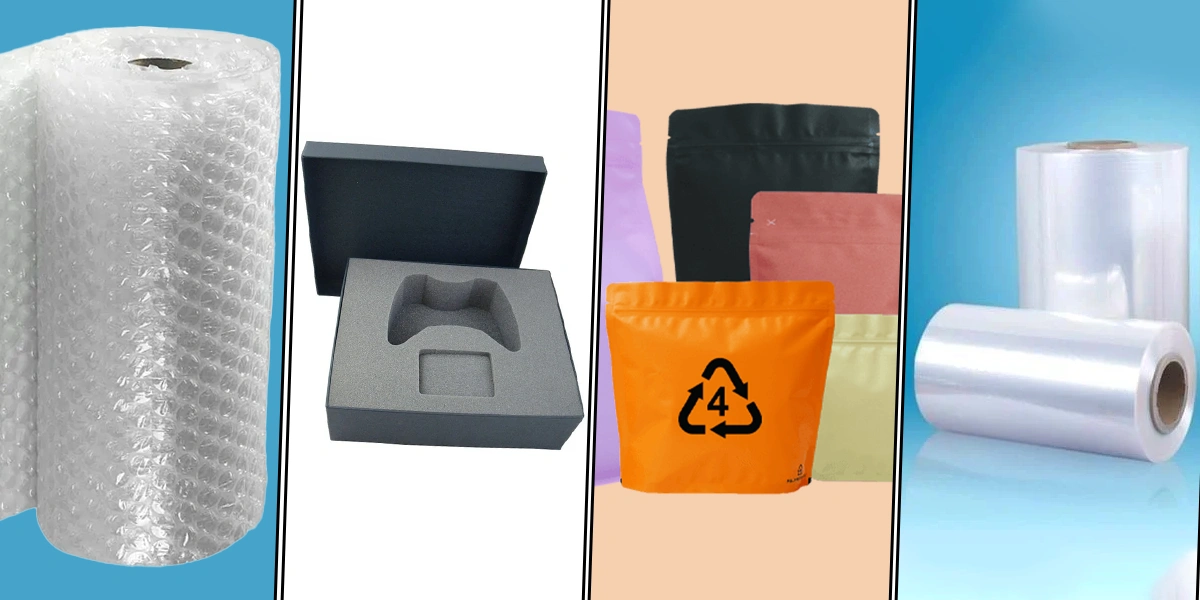
Bubble Wrap:
Bubble wrap is a packaging solution that provides a protective shield for sensitive products from breakage and harm during transportation especially. It acts as a soft cushion that can bear the shock during the transit.
Foam:
Foam is also one of the important protective materials. It can safeguard sensitive material products like glass, shiny steel, and other premium material. Foam prevents the products from scratches, breakage, and wear and tear.
Films:
Films are flexible packaging solutions and are highly in use in almost all industries. Flexible, durable, and thin films have several remarkable features including FDA-approved, food-safe plastic, and high resistance to weather changes.
The best thing about films is that they are eco-friendly packaging solutions. Most of the films are recyclable and eco-friendly, hence reducing environmental destruction. These packaging films can help shape the product packaging you want. Commonly used films in the packaging industry are:
- Polyethylene Films
- Polyolefin Films (POF)
- Polypropylene Films (PP)
- Polyvinyl Chloride (PVC), and
- Low-density Polyethylene Films.
Bags and Pouches:
Plastic offers packaging solutions like bags, pouches, labels, and rollstocks. All these can be shaped in multiple styles and sizes.
Several additional packaging add-ons can also increase the charm and attraction of these packaging solutions, like handles, zipper locks, sealing with adhesive, or resealing. Bags and pouches can also be used as an eco-friendly solution by adding biodegradable materials.
-
Kraft Paper
Kraft paper and cardboard are paper-based packaging materials. Kraft paper has a fairly large share of the packaging industry. It provides a base for many packaging materials, like cardboard, rigid, and corrugated. This is used as a mailer bag to carry many products of different industries. Food packaging is one of them.
It comes under the shadow of recyclable packaging materials. The flexible paper packaging includes wraps, bags, pouches, and more.
-
Metal Films and Foils
These two packaging materials are made of metals but lie into flexible packaging.
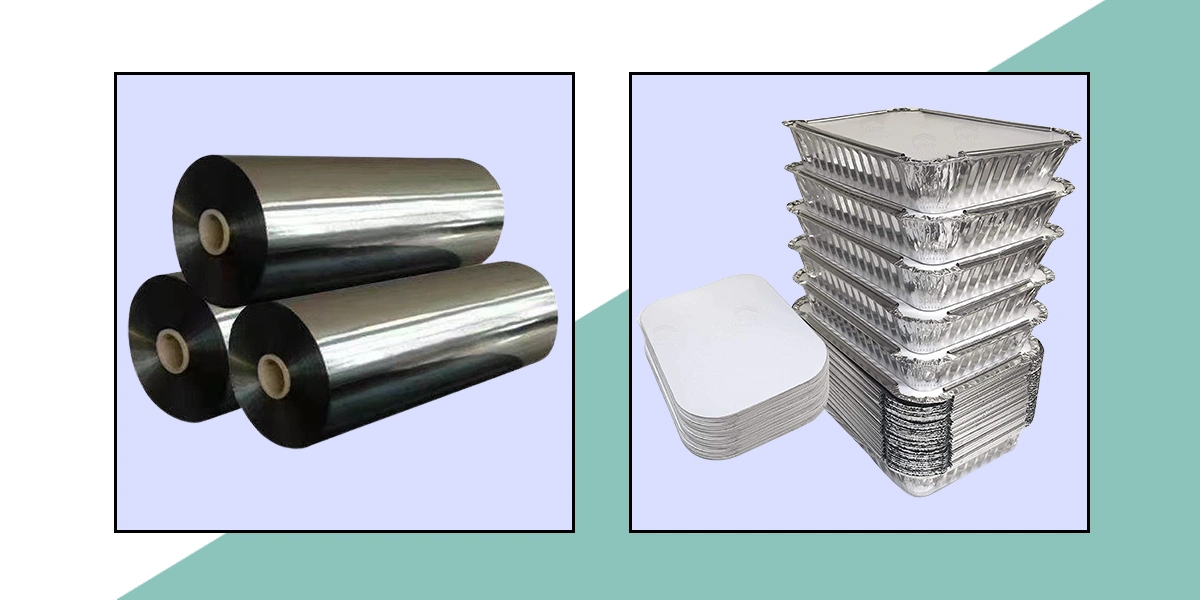
Films:
Films can be made from plastics and metal. It all depends upon the requirement and use of it. These flexible packaging solutions can be highly effectively used in almost all industries. This packaging is eco-friendly and hence human-friendly.
Aluminum Foils :
Aluminum is the earth’s most abundant metallic constituent. Aluminum foil is hygienically important for food packaging. This material is highly in use in various industries including food packaging. It provides high protection for food and keeps the products fresh for a long time.
5 Factors to Consider for Comparing Packaging Materials
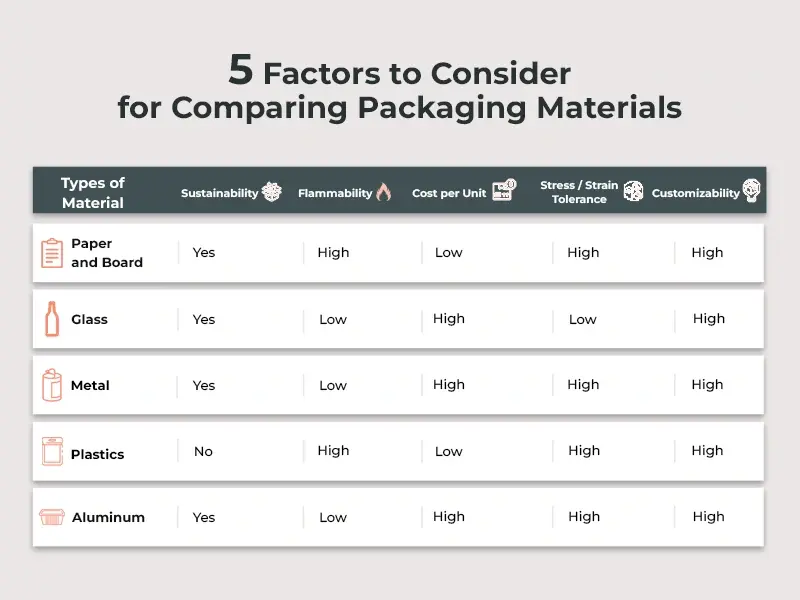
Sustainability:
Sustainable packaging is desirable to minimize, reduce, and control environmental pollution. Packaging materials like biodegradable materials, kraft paper packaging, and other packaging materials offer a high level of satisfaction to the environment.
Flammability:
Many materials are not highly resistant to flammability. These materials include paper board and plastics. These can change their shape on a minimum level of heat. whereas, glass and metal can bear a lot of heat before they get their shapes changed from one to another.
Stress and Strain Tolerance:
Glass is a packaging material that is highly appealing and yet lowest in stress and strain tolerance. Plastics and metals are materials that can bear high levels of stress and strain.
Stress is the amount of pressure applied to the surface of a material, whereas strain is the level at which a material gets its shape changed from its original.
Customizability:
Almost all of the packaging materials offer customization options up to a large extent. However, plastics, paperboard, and metal offer great options for customization. They can be customized according to your brand and product’s packaging requirements to give your product’s packaging a personalized touch.
Costs of Materials:
Paper and plastic packaging materials offer low-cost packaging solutions. However, glass and metal are comparatively high-cost materials. It’s better not to focus on costs instead and think of utility when choosing packaging materials for your needs.
Making Your Packaging Decision the Best
After getting a rich amount of information, you can make the best decisions about your product packaging. You can make a highly effective packaging decision by implementing the choices that best suit your packaging requirements and the resources they need to meet your packaging requirements.
Wrapping it Up!
We hope that reading about packaging materials will help you choose packaging according to your requirements. However, if you still have questions, you can reach out via phone( 972)-590-8867) or email (sales@thecustomizeboxes.com) to get proper answers and choose the best packaging!
